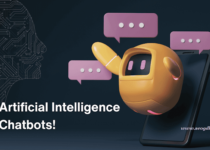Beyond Cookies: How Zero-Party Data and AI Are Reshaping Digital Marketing in 2025
In my earlier article where I did a deep dive into the state of programmatic advertising in 2025, one of the key trends was the move away from cookie-based targeting. We will now look at how zero-party data and AI is reshaping the digital marketing space in 2025.
The Cookie Apocalypse is Here
Picture this: You’re browsing for hiking boots online, and suddenly, ads for socks, backpacks, and granola bars stalk you across the internet. Annoying, right? That’s third-party cookies at work — and in 2025, they’re as extinct as dial-up internet. But don’t panic! A new era of marketing is rising from the ashes, powered by zero-party data and AI. Let’s explore how these two forces are turning creepy ads into meaningful conversations.
What’s Wrong with Third-Party Cookies?
Third-party cookies were like that nosy neighbor who eavesdrops on your conversations. They tracked users across sites without consent, leading to privacy lawsuits, ad blockers, and frustrated consumers. In 2025, Chrome and other browsers have phased them out entirely. The result? Marketers can’t rely on sneaky tracking anymore.
Enter Zero-Party Data: The New Gold Standard
Zero-party data is the antidote to cookie chaos. It’s data customers voluntarily share with brands — like preferences, values, or feedback. Think of it as a direct conversation instead of eavesdropping. And when paired with AI, it’s revolutionizing marketing.
The Rise of Zero-Party Data
Zero-party data isn’t just a buzzword — it’s the cornerstone of trust in 2025.
What Exactly Is Zero-Party Data?
Zero-party data includes anything users explicitly tell you:
- “I’m vegan.”
- “I prefer eco-friendly packaging.”
- “Send me discounts on yoga gear every Tuesday.”
Unlike third-party data, it’s transparent, accurate, and privacy-compliant.
How Zero-Party Data Differs from First-Party Data
First-party data is what you collect passively (e.g., website behavior). Zero-party data is actively given. It’s the difference between noticing someone bought sneakers (first-party) and them telling you, “I run 5 miles daily” (zero-party).
Why Consumers Want to Share Zero-Party Data
Would you trade your favorite color for a personalized shopping experience? 63% of consumers say yes. In 2025, people crave relevance, not randomness. Zero-party data lets brands deliver that — without the creepiness.
AI: The Engine Powering Zero-Party Data Strategies
Zero-party data is useless without a brain to interpret it. Enter AI.
How AI Processes Zero-Party Data
AI analyzes zero-party data like a chef perfecting a recipe. It identifies patterns (e.g., “vegan customers prefer cruelty-free brands”) and predicts needs (e.g., “This user will need running shoes in 3 months”).
Machine Learning and Predictive Personalization
Machine learning turns preferences into prophecies. For example, Sephora’s AI uses quiz data to predict your skincare routine before you even search for it.
Real-Time Decision Making with AI
Imagine a customer says, “I’m planning a wedding.” AI instantly serves venue recommendations, dress inspo, and catering ads — all within seconds. That’s 2025’s marketing magic.
Case Studies: Brands Winning with Zero-Party Data and AI
Let’s see how the pros are doing it.
- Sephora’s Hyper-Personalized Beauty Recommendations
Sephora’s “Skin Care Quiz” asks users about allergies, skin types, and goals. AI then curates product bundles, boosting conversion rates by 300%. - Spotify’s “Taste Match” Campaign
Spotify’s AI matches users’ music preferences with concert recommendations. Fans get personalized playlists and ticket alerts, driving a 40% spike in event attendance. - Nike’s AI-Driven Fitness Communities
Nike’s app collects zero-party data (fitness goals, workout frequency) to create AI-powered challenges. Users compete with friends, increasing app engagement by 55%.
How to Collect Zero-Party Data Ethically
No tricks, no traps — just value-for-value exchanges.
- Interactive Quizzes and Surveys
“What’s your skincare personality?” quizzes work because they’re fun and useful. Offer a discount in return, and 70% of users will spill the beans. - Gamification and Incentives
Chipotle’s “Guac Mode” game rewards players with free guac for sharing dietary preferences. Playful = profitable. - Preference Centers and Profiles
Let users build profiles like Netflix’s “Watch List.” The more they customize, the better your AI performs.
Integrating AI with Zero-Party Data
Mixing AI and zero-party data is like baking a cake — get the recipe wrong, and it flops.
Choosing the Right AI Tools
Platforms like Segment and Braze unify data, while AI tools like Persado generate personalized email copy.
Building a Data Governance Framework
Rule #1: Never use data for something the user didn’t consent to. Rule #2: Delete data when asked. Simple.
Training AI Models on Transparent Data
If users say they hate spam, train your AI to send fewer emails, not more. Common sense? For humans. For AI, it’s a learning curve.
The Future of Marketing: Predictions for 2026 and Beyond
Buckle up — it’s getting wild.
AI-Generated Dynamic Content
AI will create custom videos, blogs, and ads in real-time. Imagine a Nike ad showing your last marathon finish line.
Voice and Visual Search Optimization
“Hey Siri, find me a vegan restaurant” will pull from your zero-party data (you’re gluten-free) and AI insights (you prefer patio seating).
Decentralized Data Marketplaces
Users will sell their zero-party data directly to brands via blockchain. You own your data, you profit from it.
Conclusion: The Future is Transparent, Personalized, and AI-Powered
2025, marketing isn’t about chasinng customers — it’s about knowing them. Zero-party data builds trust, AI delivers relevance, and together, they’re unstoppable. The cookie apocalypse wasn’t the end — it was the beginning.


